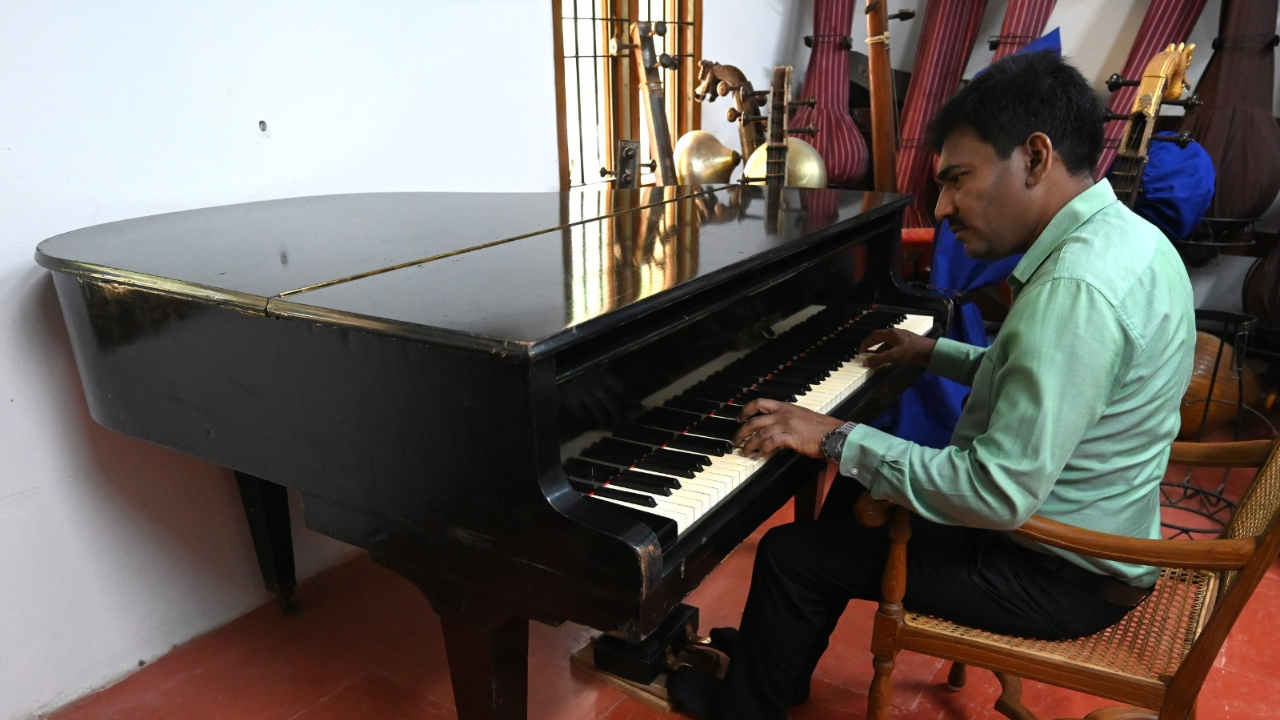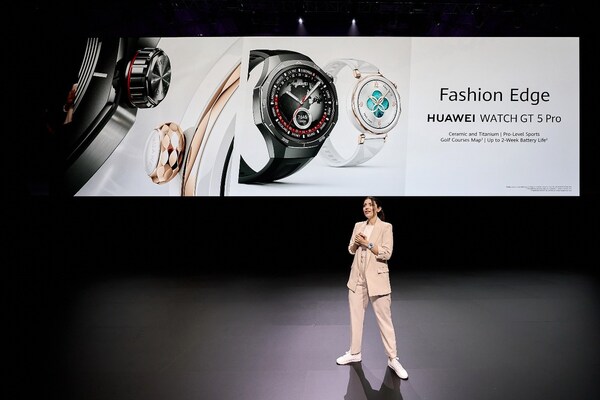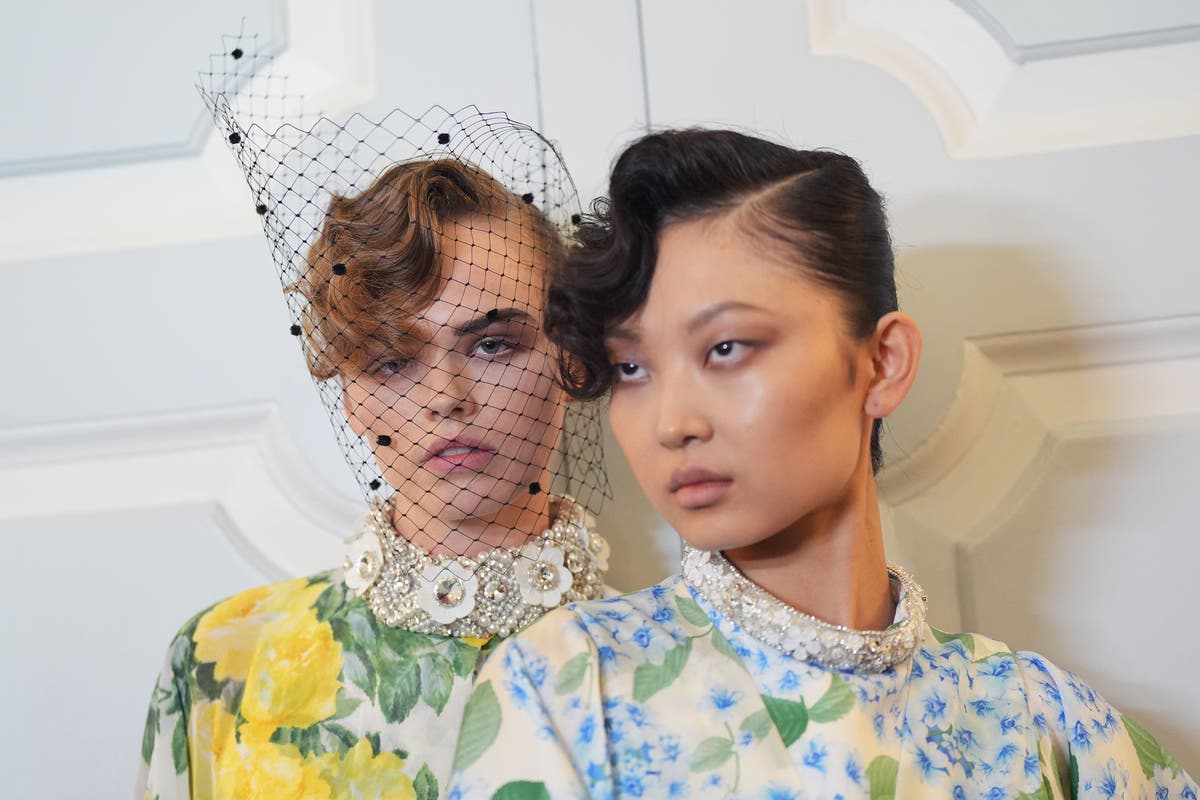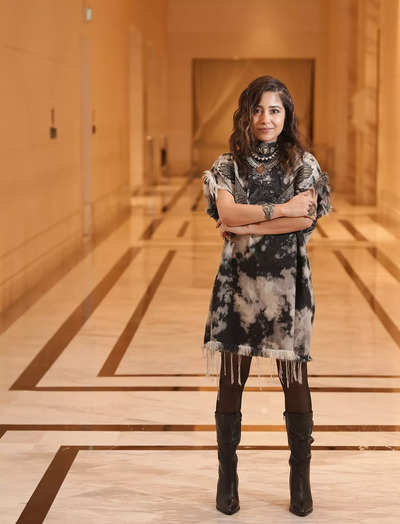Mozart Can anyone imagine a silk sari-clad, diamond nose-pin wearing M S Subbulakshmi playing a piano , let alone Schubert and Mozart? But MS did own a piano, though the only remnant is the instrument itself, a baby grand Steinway, which occupies pride of place at the instrument museum at the Kalakshetra today, among the tampuras and mridangams. It was during the shoot of the 1945 Tamil film ‘ Meera ’, with MS in the lead, that the piano was ordered from Europe, recalls her grandniece and author, Gowri Ramnarayan. “Perhaps, instead of a harmonium, they decided to use a piano to compose the melodies.
” Even after the Hindi version of the film was released a few years later, the piano remained in the living room of her mansion at Kilpauk, and as children, they would play house under it, she says. “I remember MS playing it occasionally, bhajans and simple Schubert and Mozart lullabies, mostly taught by a brilliant musician who was called ‘piano Vaidyanathan’. He would play it frequently and MS would listen with great interest.

Musicians of the past were interested in all kinds of music – even European love songs and African spiritual songs. She’d sing English songs and teach them to us with Carnatic notations.” The piano has played a tiny part in Indian history as well.
The story goes that a broken-hearted Mahatma Gandhi, upset over the Partition, requested MS to record his favourite Meera bhajan – Hari Tum Haro – in her voice and send it to him. “MS told him she didn’t know the bhajan, but Gandhi insisted. Vaidyanathan composed a tune for the bhajan overnight on this piano, and MS recorded it and sent it to Gandhi by flight.
” Gandhi received it before his birthday in October 1947 and was elated. But the next they heard was the news of his assassination a few months later, on the radio. “MS fainted on hearing it, but immediately after the telecast, AIR played her version of Hari Tum Haro.
” When Gowri’s sister decided to take up piano at Cambridge, MS gifted it to her, and she was the one who donated it to the Kalakshetra in the late 1990s, where it remained untouched for a while. But the instrument was always revered, and whenever the piano changed hands, a Saraswathi puja was performed on it, recalls Gowri. Today, the piano is in excellent condition and in tune, and where musicians play it occasionally.
At the Kalakshetra is yet another upright piano, smaller but older, dated 1938, which belonged to the founder of Kalakshetra, Rukmini Arundale . Dancer and former director Leela Samson recalls that Rukmini learnt to understand the beauty of western music from her husband George Sydney Arundale. “He was the one who played the instrument, and they would listen to great composers every evening.
The piano was gifted to her by her husband’s aunt, Francesca Arundale, who brought him up,” she says. Gowri recalls that when musicians visiting Kalakshetra played the piano, senior students and teachers would gather to listen. This piano can also be found in a well-preserved condition at the Kalakshetra.
It’s evening and the year, sometime in the early 1920s. The guests at the Taj Connemara (then run by Spencer & Co) are mostly the Indian elite and the British, probably Lady Connemara among them, all dressed up for the ballroom dance of the day. The centrepiece of the small band is a classic grand piano.
Waltz music and classical fill the air as Joseph David, one of the chief musicians, weaves his magic, and the crowd begins to sway. Cut to 2024 and at the very same piano at the lobby sits Franklin Anthony David, who is none other than Joseph’s grandson. Only, this time it’s beautiful piano covers of Ed Sheeran or other recent artists.
“After my grandfather and my grand uncle, my father took over as the official pianist at Taj. In the 1970s and 1980s, jazz versions of popular songs like those of the Beatles used to be in,” says Franklin. But how did the piano survive a world war and other groundbreaking events at such a vulnerable spot? What seems to have worked in its favour, says Ian dubier, general manager of Taj Connemara is that it was hardly moved from the lobby and was always in use as the hotel always had music evenings through the various changes in ownership.
“A piano also needs careful maintenance, as even a slight expansion of the keys or the padding of the metal inside can change the tone. The keys and the metal parts inside have been replaced but the wood is the same,” says Franklin. “It’s a handmade instrument and has a beautiful rich tone even today.
” At the hotel today, the instrument can be found at the lobby, but you can only listen to Franklin play, as no one is allowed to touch it, which is probably why it stays well-preserved! At Musee Musicals, the oldest musical instrument company in Chennai, a student, barely ten, practises scales on an upright piano, unaware that the instrument is more than a century older than her. One of the few instruments with ivory keys, it’s probably among the oldest in the country and was imported from Germany when the company was owned by a German. “It’s a Steinburg, pre-Steinway, and the wood is so solid that it must have been unimaginably difficult to transport it by ship,” says Kishore Das, the current co-owner of Musee.
The Musee team is the one behind the restoration of all the old pianos in the city including the one at Kalakshetra. “Though the mechanisms of the instruments have changed over the years, as the old ones were designed to play slower music of the past, a piano can be used forever if maintained well.” An acoustic grand piano costs about Rs 30 lakh now, but India hasn’t ever manufactured them, so every piano is imported from abroad even today, he says.
.



















